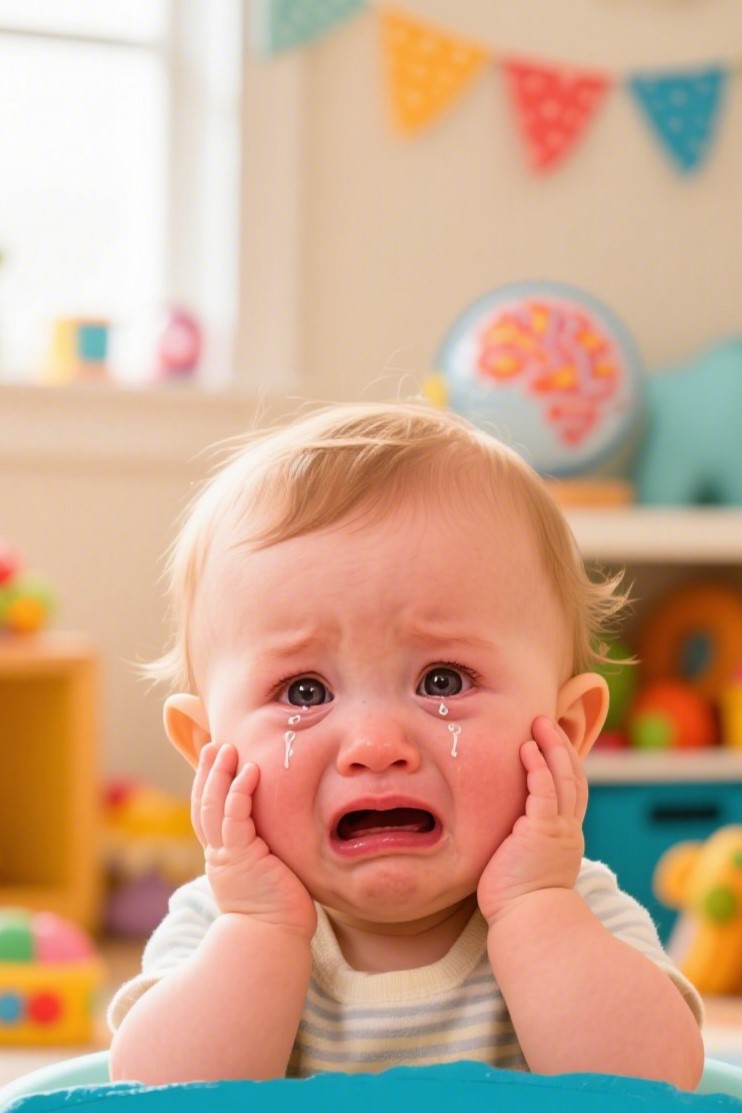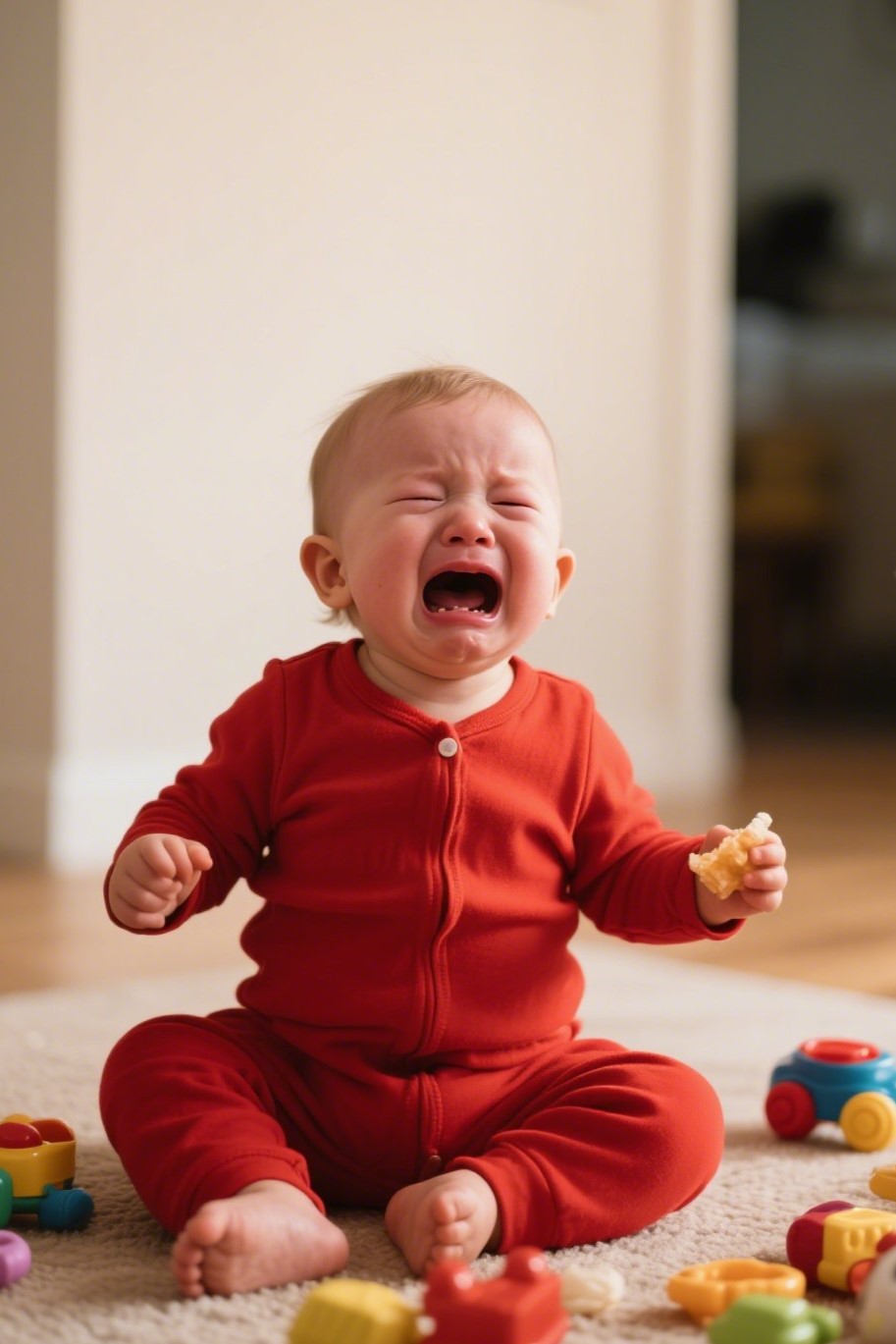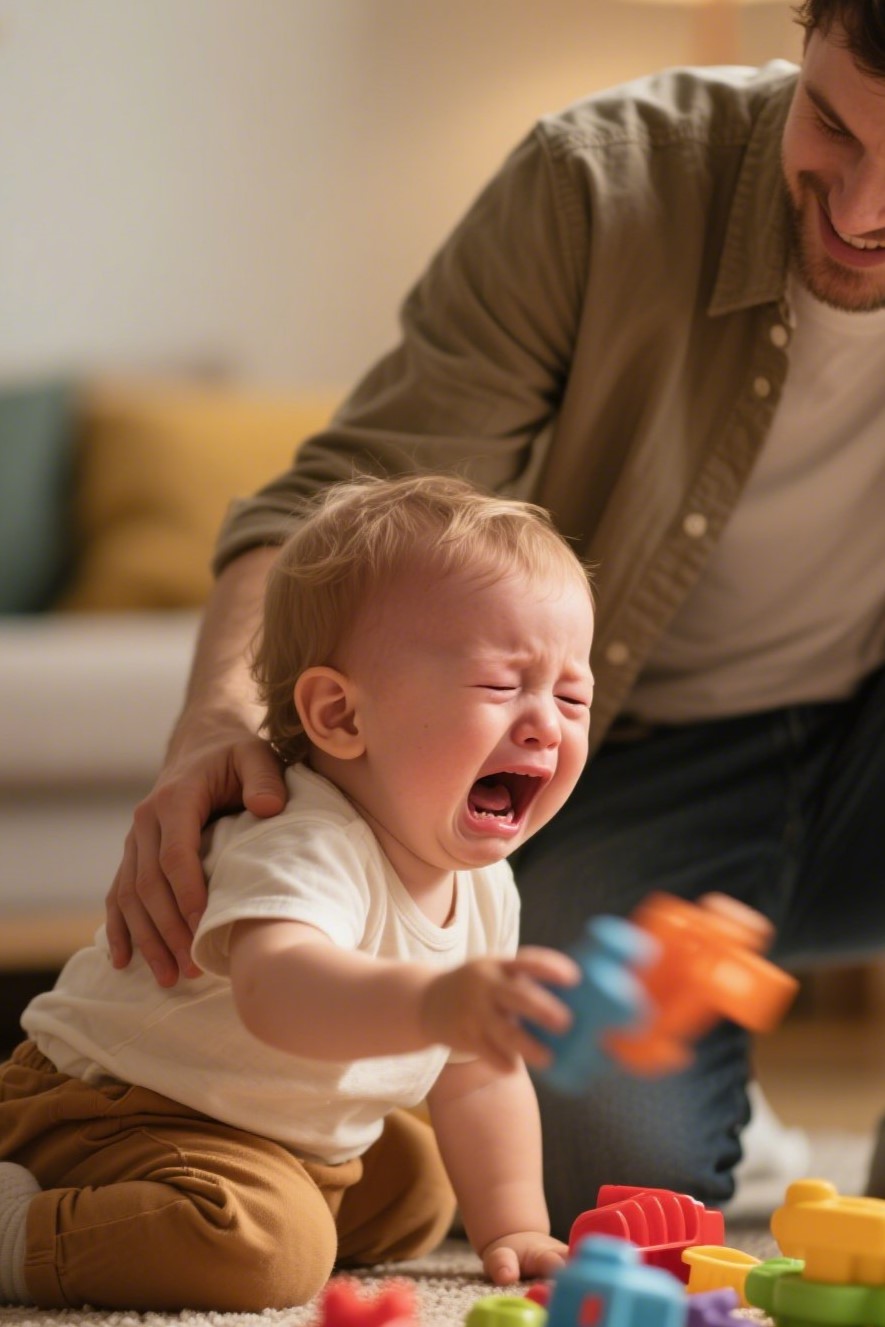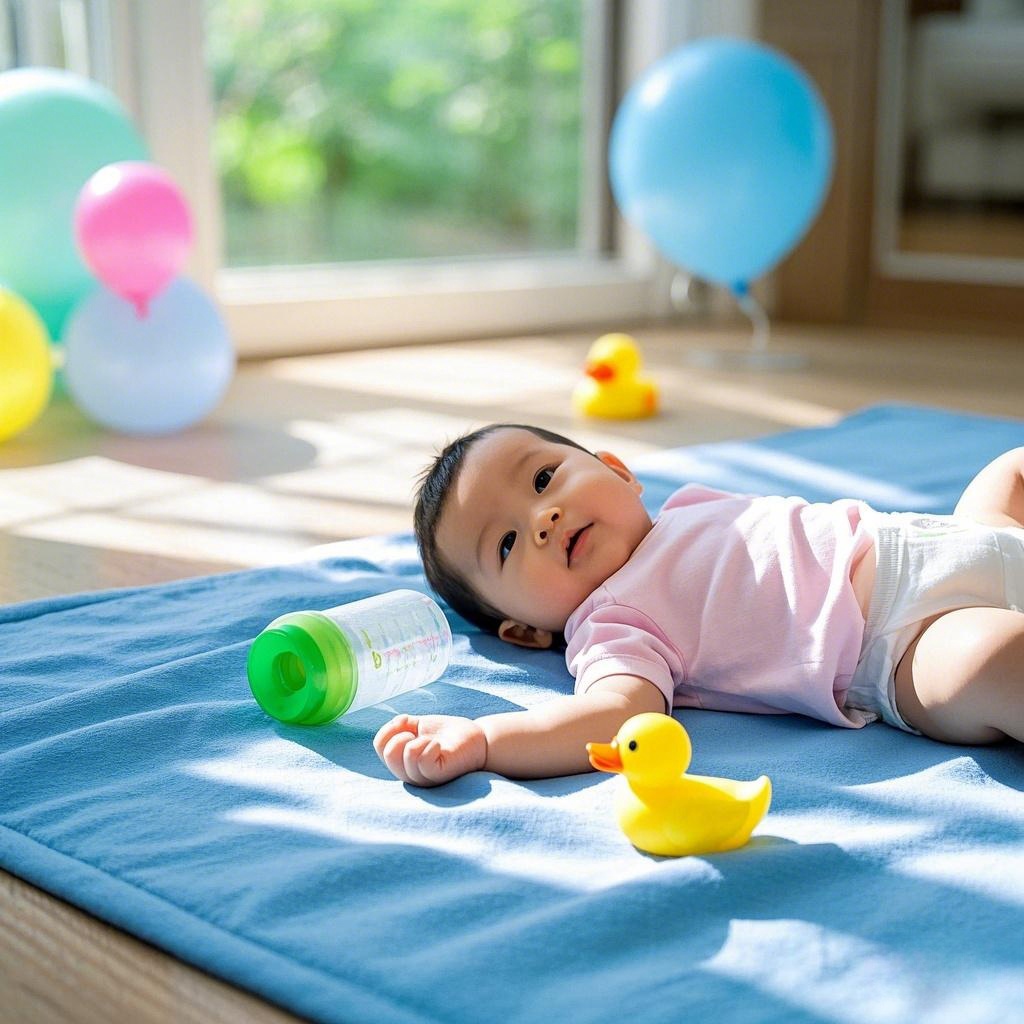You’re in the middle of the grocery aisle. Your 1-year-old just threw their snack on the floor and is now screaming like the world is ending because you won’t let them chew on the receipt.
You’re trying to stay calm, but inside, you’re wondering:
“Is this normal? Why is my sweet baby acting like a tiny tornado?”
The answer? Yes. It’s normal. Super normal. Monumentally normal.
Welcome to the wonderful (and wild) world of early toddlerhood—where emotions are big, words are few, and your little one is learning how to feel.
Let’s unpack this tantrum thing together—with some science, heart, and humor.
🧠 The Toddler Brain: Big Feelings in a Small Package
Your 1-year-old is growing faster than you can say “snack time.” Their brain is firing new connections by the second, but guess what’s not fully developed yet?

- Emotional regulation
- Patience
- Impulse control
- Language to express frustration
So when your child gets overwhelmed—by hunger, noise, tiredness, or the wrong color cup—they don’t have the tools to say, “Excuse me, I’m feeling dysregulated.” Nope. They scream. They cry. They flop to the floor like a tiny drama king or queen.
It’s not defiance. It’s development.
📅 But Wait—Aren’t Tantrums More Common at Age 2?
Yes, the “terrible twos” get all the attention, but tantrums can start as early as 12 months. That’s when babies become toddlers—and toddlers become little emotional firecrackers.
At 1 year old, your child is starting to:
- Assert independence (“No!” and “Mine!” are coming)
- Get frustrated when they can’t do something
- Feel big feelings they can’t explain yet
- Want control, even when they’re not ready for it
So yes, those mini meltdowns are expected. You didn’t do anything wrong. You’re raising a human—and humans are messy when they’re learning.
🧸 What Triggers a 1-Year-Old’s Tantrum?

Sometimes it feels like everything and nothing at the same time. But here are the most common tantrum starters at this age:
- Being told “no” (how dare you!)
- Not getting something they want (like your car keys or the remote)
- Feeling tired or overstimulated
- Transitions (leaving the park, stopping playtime)
- Hunger (a.k.a. baby hangry)
- Teething pain or general discomfort
💡 How to Handle Your Baby’s Tantrums (Without Losing Your Mind)

You’re not alone—and there are ways to handle tantrums with grace, even if your toddler has lost theirs.
✨ 1. Stay calm, even if they aren’t
Your child takes emotional cues from you. Be the steady boat in their storm.
✨ 2. Offer comfort, not punishment
They’re not being “bad”—they’re overwhelmed. A gentle hug or soothing voice can calm more than a lecture.
✨ 3. Keep it short and simple
Say things like: “I know you’re upset,” or “You’re mad because you can’t have that.” Validating helps them learn to name feelings.
✨ 4. Distract like a magician
Distraction is your best friend. A silly sound, toy, or change of scene can work wonders.
✨ 5. Set boundaries lovingly
It’s okay to say no—but do it with warmth:
“I see you want the scissors. That’s not safe, but you can play with these blocks instead.”
🌱 What Your Toddler is Learning Through Every Tantrum

Believe it or not, tantrums are teaching moments. Each time your child experiences a big emotion—and sees you handle it with patience—they’re learning:
- That feelings are okay
- That they’re safe, even when they’re mad
- That their parent is a safe space
- How to regulate themselves one day
It’s messy. It’s loud. But it’s part of growing.
❤️ Final Thoughts: You’re Not Alone
If your 1-year-old is throwing tantrums, it doesn’t mean you’re failing.
It means they’re learning, growing, and becoming more aware of their world.
And you?
You’re doing the work of guiding them through it with love and resilience—even when it’s hard.
So next time your little one loses it over a banana cut the “wrong way,” take a breath and remind yourself:
This is normal. This is growth. This too shall pass.
You’ve got this, parent. Tantrums and all.






